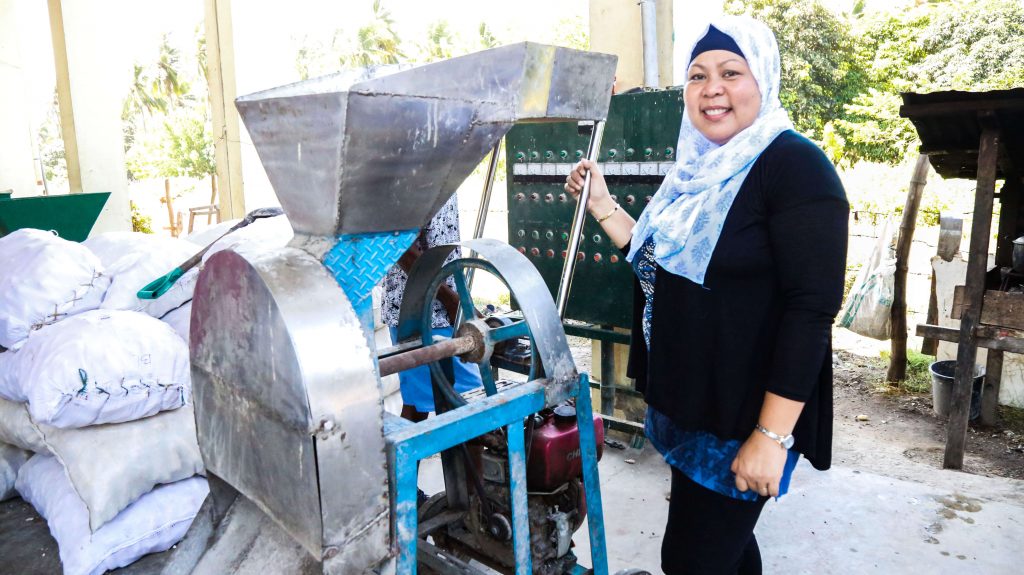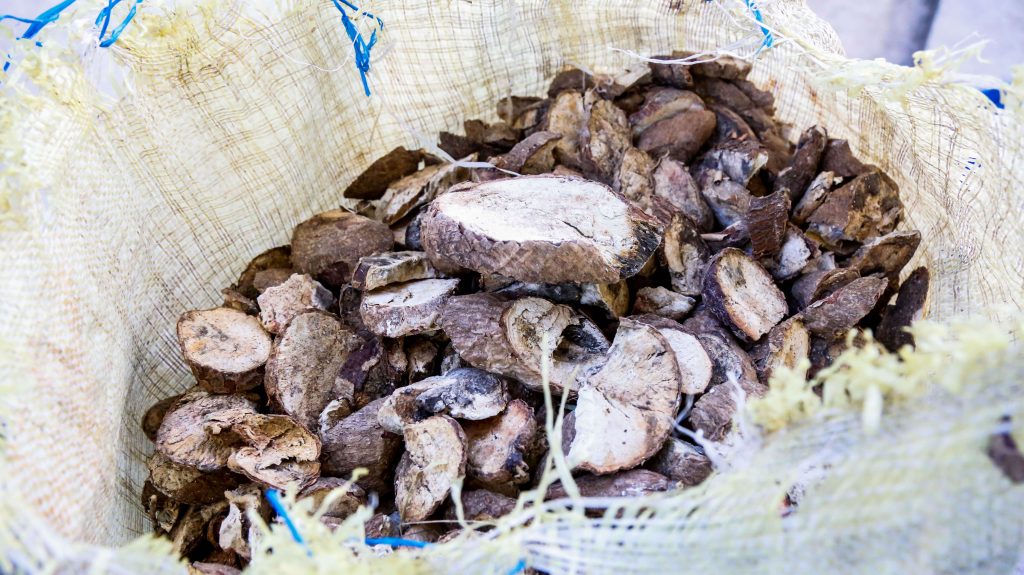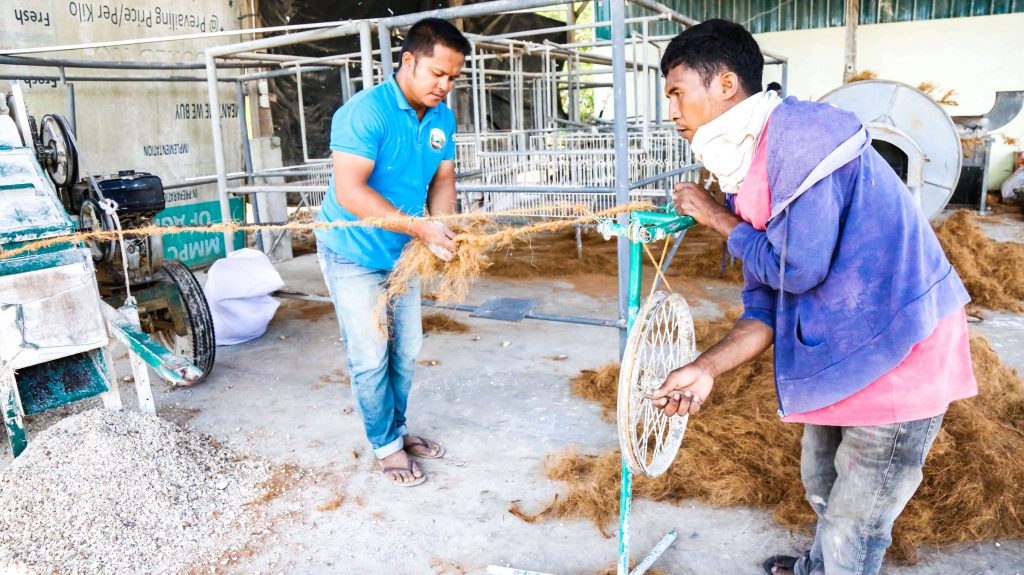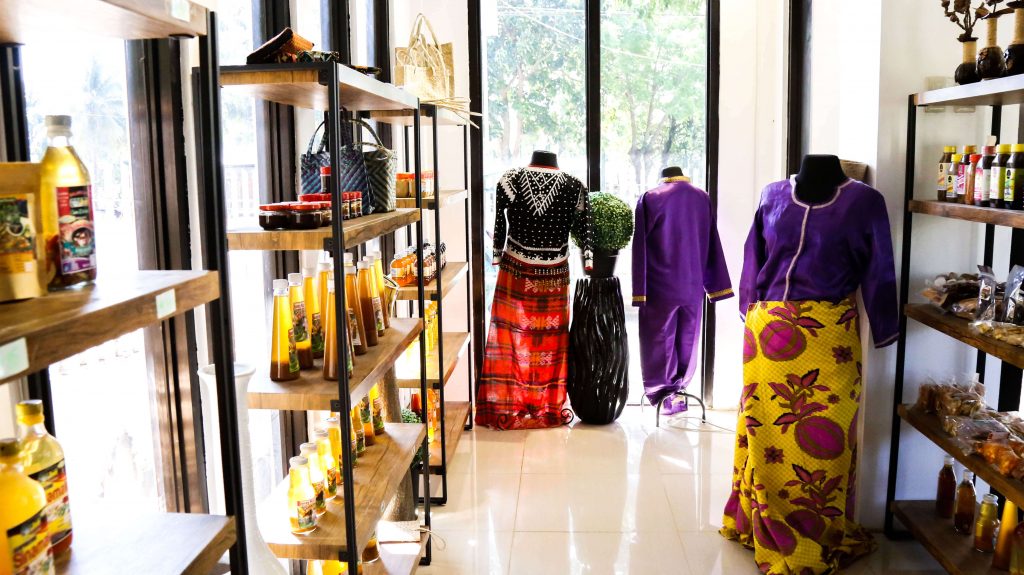Unearthing a community treasure
Once there was a family who decided to plant a seed in their backyard just so they may have a source of extra income once it bears fruit. They took very good care of it–watered it regularly, trimmed the branches as necessary, and made sure it gets all the resources it needs. Maintaining it was not easy.
There were times they thought the plant was dying because the leaves began to fall and there was a long time that it didn’t produce any fruit. There were storms that almost knocked the tree down. But some years later, it bore lots of fruits to the point that they had to invite their neighbors to harvest from the tree as well. The tree continued to grow abundantly and now, it feeds not just the family who plant it but also the whole community.
The story of this tree is like the story of Malapatan Multi-purpose Cooperative (MMPC) of Sarangani Province.

Planting the Seed
In 1992, 30 employees of the Malapatan Local Government Unit (LGU) decided to start a cooperative within their office. Each of these founding members contributed Php 500 so they could start a small sari-sari store. All they wanted was to have an extra source of income.
For the next few years, they had been content with the continuous earnings from the store and the growth of the cooperative in terms of numbers. However, due to some problems in resource management, the store started making losses.
For a small employees’ cooperative, that may seem like the end. But the members did not lose hope. They tried to find ways to recruit more members and restore their capital.
Eight years since they started, the group decided to change the line of their business and began offering credit services to its members. In the same year, they opened the cooperative to other members of the community, outside the Malapatan LGU. This was when the cooperative started to grow exponentially.
Bearing fruits
Through time, they have expanded their services to other lines of business. To date, they are still offering credit services which are most beneficial for their members who are farmers and micro and small entrepreneurs (MSE). This also gave them the opportunity to be a partner of the Department of Trade and Industry (DTI) for the Pondo sa Pagbabago at Pag-asenso (P3) program as a conduit. This made it easier for their members, particularly the MSEs, to obtain capitalization for the growth of the respective enterprises.
The Malapatan Negosyo and Pasalubong Center now houses products locally produced in the area, with the support of the financing coursed through MMPC. These include local delicacies such as pinagsugbo (deep fried banana slices coated with caramelized sugar and sesame seeds), pastillas, tablea, and their very own tinagtag (crispy rice rolls best eaten with coffee or coco milk).
They also offer a savings program for students with ages 6-17 called Aflatoun, which is usually participated by children of their members. This is to ensure that financial literacy is already inculcated in the next generation of Malapatan.

Moreover, since majority of Malapatan’s population relies on farming, they started an agri-enterprise where their member-farmers plant high-value crops such as coconut, cassava, corn, cacao, cotton, and banana on lands obtained by MMPC. These crops are being supplied as raw materials to various large corporations in the country. For instance, most of their cassava and corn harvests are being bought by a known hog feeds manufacturer. They also produce other products such as cassava chips and coco coir.
The construction of their organic virgin coconut oil (VCO) facility is also ongoing. This is expected to be a huge help to Malapatan coconut farmers, giving them a definite market for their harvest.
MMPC Chairperson Maria Nisa Suib mentioned that despite the abundance of coconuts in their town, farmers earn very little since majority of them have mortgaged their lands and cannot earn enough to redeem it. This is because the profits from raw coconuts and copra, which is usually made into coco coir, are not enough. With this VCO facility, coconut farmers will surely be paid with the right amount, giving them an opportunity to get their own lands back.
Over the years, they also ventured into the transportation industry. They operate utility vehicles covering the route of Malapatan to General Santos and vice versa. As of 2018, they have 24 units offering daily trips. They were likewise able to avail a franchise of a gasoline station, located near their newly-built office. Soon, they will also open their own convenience store franchise in the same compound.
Furthermore, they are planning to provide affordable housing to its members since very few residents of Malapatan have their own lands. To date, the land has already been procured and they are already in the process of preparing the documentary requirements.
Feeding the Community
All these services and the earnings from it are benefitting over 5,000 members and beneficiaries of MMPC not only in Malapatan but also across the Soccsksargen region.
MMPC is a diverse group of micro and small entrepreneurs, farmers, fishermen, students, and senior citizens, among others. The cooperative is open both for Muslims and Christians, as long as they have complied with the requirements which include a minimal membership fee and attendance to a short financial literacy seminar, among others.
Aside from providing additional source of income to its members, MMPC also makes life easier for the people of Malapatan through their services like providing their farmers with a definite market for their produce, making travel more convenient for commuters, offering an instant source of capitalization for entrepreneurs. Their various businesses also provide employment to many people in their area.
Furthermore, they conduct activities outside the regular services they provide. Examples of these are participating in the Department of Education’s Brigada Eskwela, conducting medical outreach programs, and joining greening and tree planting activities.
“With the services we provide, we believe that MMPC is really a blessing, not just for our members, but for the whole Malapatan community,” Suib shared.

Tending the plant with love and care
Who would have thought that this small employees’ cooperative would grow into a big social enterprise that contributes so much to the development of Malapatan, Sarangani? The secret for their growth? “Passion to serve others and love for the cooperative,” said Suib.
“Running and sustaining a cooperative is not easy, but our passion to help others and the community keeps us going. If we care about the cooperative and our members, any challenge will not discourage us,” she added.
Their passion for service and love towards cooperative members and the communities it serves, drives their relentless action so that MMPC continuous to thrive.
They regularly conduct capacity building activities such as financial literacy seminars and skills trainings for their members to ensure that earnings from the cooperative are sustained and not put to waste.
They likewise try their best to maintain good relationships with their customers–from the smallest ones up to the large corporations sourcing supplies from them–by providing them quality services and great deals.
Just like a plant that needs to be watered, MMPC also needs a continuous flow of resources. This is why they never get tired of looking for possible partners.
DTI introduced them to big corporations buying their agricultural produce. The agency also provided them with a granulator and a chipping machine under the Shared Service Facilities (SSF) program to hasten and increase their production.
MMPC also received a Php 6 million worth of credit line as conduit for the P3 program, an initiative of the Department through its attached agency Small Business Corporation. This allowed the Cooperative to help over a hundred entrepreneurs in their area obtain capitalization.
Until now, DTI continues to support MMPC through inviting them to various training programs. Their strong relationship with DTI made them feel like they are not just mere beneficiaries of the agency’s programs and projects, but partners in uplifting the municipality of Malapatan.
“DTI has always been there since we started. We consider DTI as the backbone of Malapatan MPC. I can really say that ‘from womb to tomb’, we can trust DTI to be there for us,” Suib said.
MMPC also receives unrelenting support from the Malapatan LGU, the Sarangani Provincial Government, the Department of Agriculture through the Philippine Rural Development Plan, the Land Bank of the Philippines, and the Development Bank of the Philippines, among others.

A Forest in the Making
MMPC, which used to be a small plant in the backyard of the Malapatan LGU, has now grown into a big, fruitful tree, feeding the whole community.
When asked about the future plans for the cooperative, Suib shared that their vision is to replicate what they did with MMPC in other areas so that more communities will benefit from such organizations.
However, the cooperative recognizes that obtaining this vision will surely take some time and lots of effort.
“It is only when we are really stable and financially liquid that we can replicate in other areas. That’s why it is our focus for now, strengthen MMPC,” Suib said.
In line with their plans to achieve financial liquidity, they want to keep on expanding their services. According to Suib, they want MMPC to be a one-stop shop for all the needs of Malapatan residents, since there are relatively few service providers in their town. They are also planning to bring these services of other areas.
But at the end of the day, MMPC believes that the fruits they have borne–the number of businesses they have, the reach of these services, their annual profits–is not really the primary measure of how they have thrived in the past two decades. The real measure of their success is the number of people they were able to feed, the entrepreneurs they helped grow, the farmers they assisted, and even the students they have taught to save.
And even in their pursuit for continuous growth, this is what drives them: not for the cooperative to get bigger but for the number of people they have inspired and given hope.



